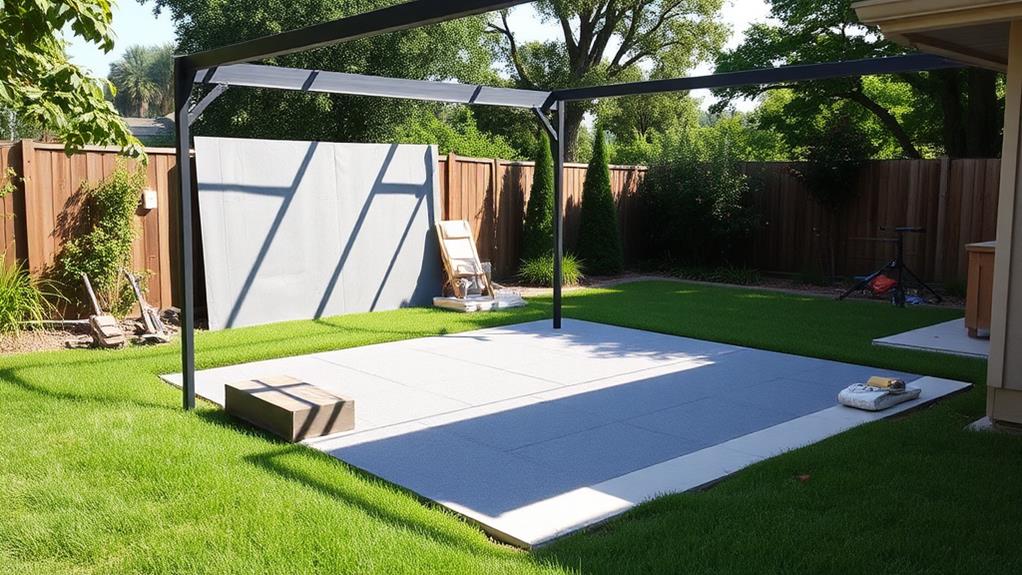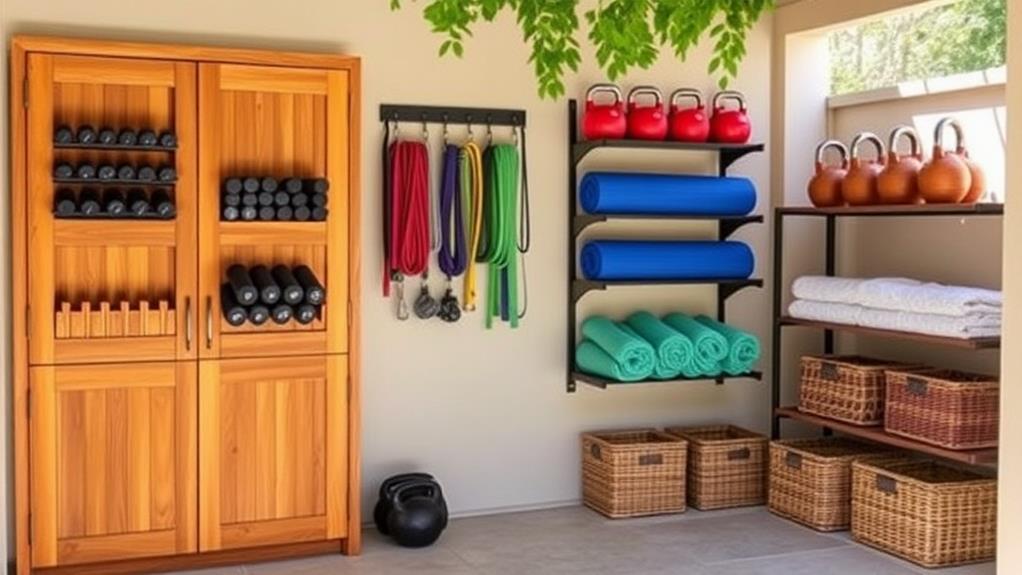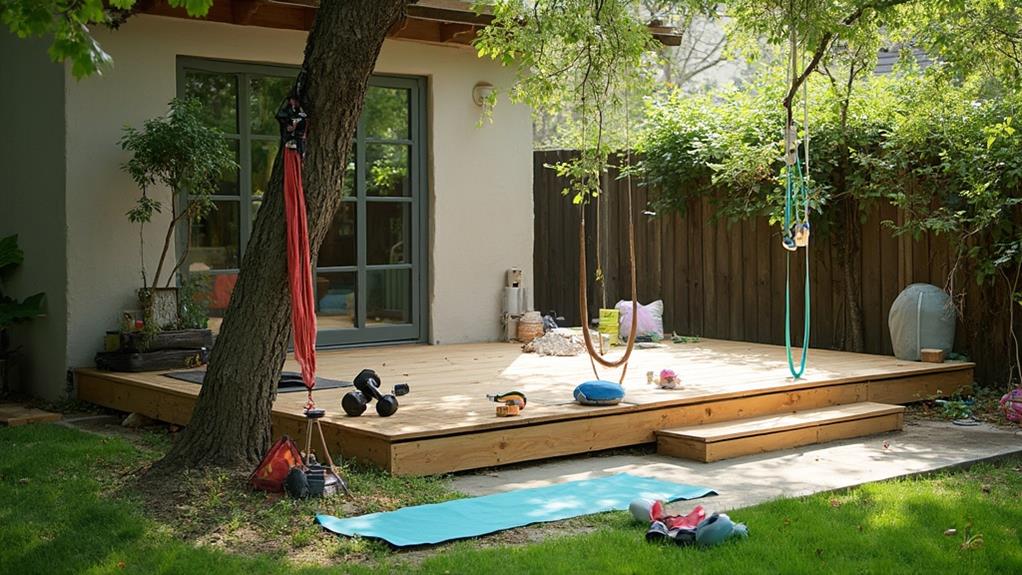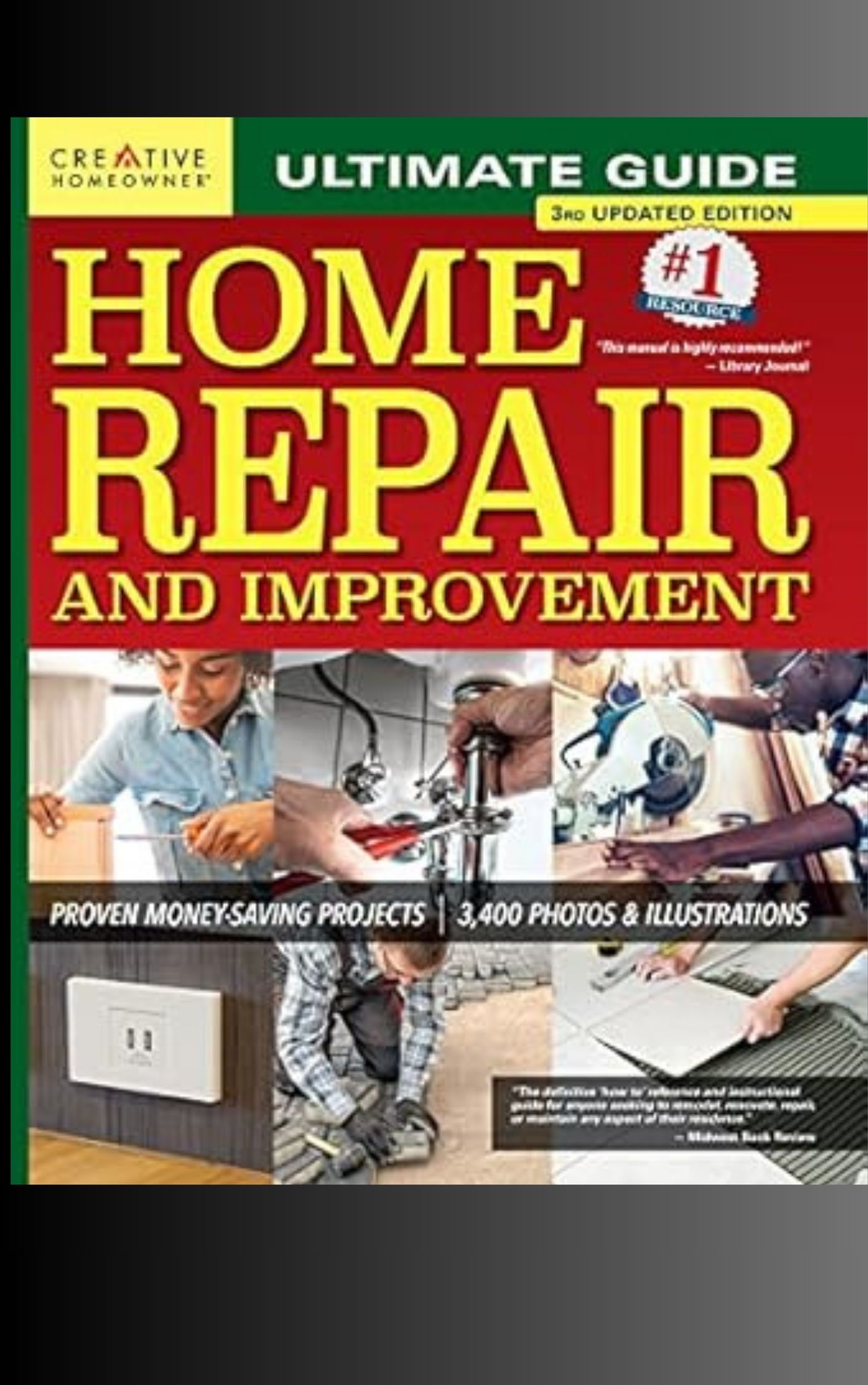Creating an outdoor home gym space requires careful planning and consideration of various factors. Start by assessing your available area, evaluating dimensions, terrain, and existing features. Choose weather-resistant equipment designed to withstand the elements, such as stainless steel or powder-coated metal. Install appropriate flooring, like rubber tiles or artificial turf, for safety and durability. Incorporate natural elements to enhance the aesthetic appeal and functionality of your outdoor gym. Implement storage solutions to protect equipment and maintain organization. By following these guidelines, you can transform your outdoor space into a functional and inviting fitness area. The following sections provide in-depth information on each aspect of this renovation process.
Assessing Your Outdoor Space

When embarking on an outdoor fitness renovation project, the first crucial step is to thoroughly assess your available space. Consider the dimensions, terrain, and existing features of your outdoor area. Measure the usable square footage and take note of any slopes, uneven surfaces, or obstacles that may impact your renovation plans.
Evaluate the amount of sunlight and shade your space receives throughout the day, as this will influence equipment placement and potential shelter needs. Assess the proximity to your home and any existing structures, considering factors like access to electricity and water sources. Take note of privacy concerns and noise considerations, especially if you live in a densely populated area.
Examine the ground composition, whether it's grass, concrete, or another material, as this will affect your choice of flooring options and equipment stability. Consider drainage and potential weather-related issues that may impact your outdoor gym's functionality. Finally, identify any local zoning regulations or homeowners' association rules that may restrict your renovation plans. By thoroughly assessing your outdoor space, you'll be better equipped to design a functional and compliant home gym area.
Selecting Weather-Resistant Equipment
With outdoor fitness spaces exposed to the elements, selecting weather-resistant equipment is crucial for longevity and safety. Choose materials that can withstand various weather conditions, such as stainless steel, powder-coated metal, or high-density polyethylene (HDPE). These materials resist rust, corrosion, and UV damage, ensuring your equipment remains functional and safe over time.
Consider equipment specifically designed for outdoor use, such as all-weather pull-up bars, resistance bands, and weatherproof weight benches. Look for items with sealed bearings and rust-resistant hardware to prevent water damage and maintain smooth operation. Opt for adjustable equipment that can be easily stored or secured during extreme weather events.
For cardio options, select machines with weather-resistant coatings and sealed electronic components, such as outdoor-specific ellipticals or stationary bikes. Incorporate natural elements like tree stumps or large rocks for functional strength training exercises. When selecting flooring, choose materials like rubber tiles or artificial turf that provide adequate drainage and slip resistance.
Regularly inspect and maintain your outdoor equipment, applying protective coatings or lubricants as needed. By carefully selecting weather-resistant equipment, you can create a durable and safe outdoor fitness space that withstands the elements and provides a long-lasting workout solution.
Flooring and Surface Considerations

Proper flooring and surface selection are critical components of a safe and effective outdoor fitness space. When renovating your outdoor area for fitness purposes, consider the impact absorption, durability, and weather resistance of various flooring options.
Rubber tiles or poured-in-place rubber surfacing offer excellent shock absorption and slip resistance, making them ideal for high-impact activities and weight training. These materials also withstand harsh weather conditions and are low-maintenance.
Artificial turf provides a cushioned surface suitable for functional training and bodyweight exercises while offering a natural aesthetic. For yoga or stretching areas, consider interlocking foam tiles that provide comfort and can be easily removed or replaced.
Concrete or asphalt can serve as a stable base for equipment but may require additional cushioning for safety. Apply an epoxy coating or rubber overlay to improve grip and reduce the risk of injuries. For multi-purpose areas, consider modular flooring systems that allow you to customize different zones for various activities.
Ensure proper drainage by incorporating slight slopes or permeable materials to prevent water accumulation. This will extend the lifespan of your equipment and flooring while maintaining a safe workout environment year-round.
Incorporating Natural Elements
Nature's integration into your outdoor fitness space can enhance both the aesthetic appeal and the overall workout experience. Consider incorporating living walls or vertical gardens to provide natural air purification and visual interest. These green elements can also offer privacy and noise reduction, creating a more serene environment for exercise.
Utilize existing trees or plant new ones strategically to provide shade during workouts, which is especially beneficial in warmer climates. Natural stone elements, such as boulder seating or rock climbing walls, can serve dual purposes as both functional fitness equipment and aesthetic features. Incorporate a water feature, like a small fountain or stream, to add a calming auditory element and potentially serve as a cooling station.
Consider using natural materials for equipment construction, such as wooden pull-up bars or bamboo balance beams. These elements not only blend seamlessly with the outdoor environment but also provide a unique tactile experience during workouts. Lastly, design winding paths or trails using wood chips or gravel to create opportunities for walking, jogging, or sprinting intervals, further integrating your fitness routine with the natural surroundings.
Storage and Organization Solutions

Efficient storage and organization are crucial components of a functional outdoor fitness space. Implementing smart storage solutions ensures that equipment remains protected from the elements and readily accessible for workouts. Consider installing weatherproof cabinets or lockers to store smaller items like resistance bands, yoga mats, and hand weights. For larger equipment, invest in durable, lockable storage sheds or bins that can withstand outdoor conditions.
Vertical storage options maximize space utilization. Wall-mounted racks and pegboards provide versatile storage for various equipment sizes. Utilize hooks and hangers for suspension training straps, jump ropes, and towels. For free weights, opt for sturdy weight trees or customized shelving units designed to handle heavy loads.
Incorporate multi-functional furniture pieces that double as storage, such as benches with built-in compartments or outdoor storage ottomans. These items can serve as seating during rest periods while concealing equipment. To maintain an organized appearance, designate specific zones for different activities and equipment types. Use weather-resistant labels or color-coding systems to quickly identify and retrieve items. Regular maintenance of storage solutions, including cleaning and inspections, will ensure longevity and continued functionality of your outdoor fitness space.
Frequently Asked Questions
How Can I Soundproof My Outdoor Gym to Avoid Disturbing Neighbors?
To soundproof your outdoor gym, consider installing acoustic fencing or sound barrier walls, using rubber flooring to absorb impact noise, and adding sound-dampening panels. Additionally, strategically placing vegetation and utilizing noise-reducing equipment can help minimize disturbances to neighbors.
What Permits or Zoning Regulations Should I Consider for an Outdoor Gym?
Navigating the maze of regulations, consider checking local zoning laws, building codes, and homeowners' association rules. Permits may be required for structures, electrical work, or significant alterations. Consult your local planning department for specific requirements in your area.
How Do I Protect My Outdoor Gym Equipment From Theft?
To protect outdoor gym equipment from theft, consider installing security cameras, motion-activated lighting, and sturdy locks. Use anchoring systems to secure equipment to the ground. Store smaller items indoors when not in use and maintain visibility from your home.
Can I Create a Climate-Controlled Outdoor Gym Space for Year-Round Use?
Creating a climate-controlled outdoor gym space for year-round use is possible. Consider installing a weatherproof enclosure with proper insulation, HVAC systems, and dehumidifiers. Retractable walls or large sliding doors can provide flexibility between indoor and outdoor environments.
What Insurance Considerations Should I Keep in Mind for an Outdoor Gym?
When considering insurance for an outdoor gym, consult your homeowner's policy for coverage limitations. You may need additional liability insurance to protect against accidents. Ensure equipment is properly maintained and secured to minimize risks and potential claims.
Conclusion
Crafting a comprehensive outdoor fitness space cultivates countless opportunities for convenient, customized workouts. Carefully considering climate conditions, choosing resilient resources, and implementing innovative installations transforms backyards into beneficial, body-boosting environments. Seamlessly synchronizing natural surroundings with state-of-the-art strength and cardio stations stimulates sustainable, satisfying exercise routines. Proper planning and purposeful design decisions deliver durable, dynamic outdoor gyms that inspire individuals to invest in their health, harmonizing home life with holistic wellness pursuits.

